Reports
Conversion of Fordow: Another Unfulfilled Hope of the Iran Nuclear Deal
by David Albright, Sarah Burkhard, Frank Pabian, and Jack Toole
July 10, 2019
Summary
The Fordow uranium enrichment facility has never been repurposed, as promised in the JCPOA. Everything required to enrich uranium to weapons grade could be quickly reconstituted in the underground portion of the facility.
Fordow is potentially part of Iran’s current threats to progressively go to higher enrichment levels and increase its stocks of enriched uranium, and if conducted there, Fordow’s underground tunnel complex is fortified to withstand aerial bombardment.
Fordow now includes semi-indigenous nuclear equipment production and potentially illicit procurement at the newly expanded support area, the former which was not likely intended by the JCPOA, and the latter which is prohibited.
The Iranian Nuclear Archive (a portion of which was seized by Israel) shows that Fordow’s original, intended purpose dating back to at least 2002 was to produce weapon-grade enriched uranium for 1-2 nuclear weapons per year. There is no doubt it could be reconstituted to fulfill that purpose.1
The 2015 Joint Comprehensive Plan of Action (JCPOA), implemented in January 2016, specified that the Fordow enrichment facility in Iran would be converted into a “nuclear, physics and technology centre” with the purpose of international scientific collaboration. Yet, little has been converted, beyond explicitly mandated work on stable isotope separation, and the language in the JCPOA is ambiguous in any case in terms of what exactly the Fordow facility should become. The Fordow compound includes both the well-known tunnel complex housing gas centrifuges and an above-ground support area a few kilometers away. Since the implementation of the JCPOA, however, Iran has been bolstering its ability to build gas centrifuges at the support area, while maintaining its surge capability to produce weapon-grade uranium in the tunnel complex. In an ominous development, Iran recently announced the opening of key new centers at the support area, which in part aim to ease Iran’s dependence on importing controlled goods for its centrifuge program through the establishment of what appears to be a semi-indigenous nuclear-related equipment production line. The development of these capabilities exploits a JCPOA loophole and is unlikely to fulfill what was envisioned as international collaboration for the Fordow facility under the JCPOA. Iran’s activities may also involve violations of the JCPOA’s procurement restrictions and strategic trade controls and sanctions of individual countries. Suppliers need to be on guard against Iran violating sanctions and strategic trade controls in its efforts to obtain relevant subcomponents for the new center from abroad.
Iran is now increasing its enrichment levels and stockpile in violation of the JCPOA and could feasibly do so at Fordow, which is heavily fortified against military intervention to halt it (if for example, Iran decided to break out to nuclear weapons or increase uranium enrichment levels to weapon-grade). New information has come to light since the implementation of the JCPOA about Fordow’s original, intended purpose. The Nuclear Archives seized by Israel from Tehran in early 2018 certify that the Fordow facility was originally intended for weapon-grade uranium production for an initial five nuclear weapons. Instead of further legitimizing the mistake in the JCPOA of granting the continued operation of the Fordow enrichment facility, the Trump administration should no longer grant a waiver for stable isotope separation work there. Given its connections to Iran’s former nuclear weapons program, the priority should be on investigating Fordow’s origins. The United States could consider reinstating a waiver if the stable isotope production work is moved to the Natanz uranium enrichment facility, where it should have been in the first place.
Fordow, Revisited
The heart of what is today called the Fordow Fuel Enrichment Plant (FFEP) is the tunnel complex, which contains gas centrifuges that are integral to uranium enrichment. Figure 1 is an image of the tunnel entrances with an overlain schematic of the underground parts, found in Iran’s Nuclear Archive, a portion of which was seized by Israel in early 2018.
Although the tunnel complex is widely perceived publicly as constituting the Fordow facility, this underground area is supported by a large terrain-protected (open air) ancillary services building located near the tunnel entrances, as well as another above-ground area about two kilometers northwest of the tunnel complex, which we call the Fordow support area (see Figure 2). This support area should also be considered part of the Fordow facility, particularly since the available area inside the deeply buried tunnel complex is relatively small, certainly too small to hold all the necessary ancillary facilities to support the operations of a gas centrifuge plant. This support area for the enrichment plant was identified in documents from the past Iranian weapons program called the “Amad Plan,” which first ordered the construction of the Fordow enrichment facility in the early 2000s. A document in the Nuclear Archive refers to the support area as the “Al Ghadir” project, and lists several facilities that support operations of the tunnel complex (see Figure 3). This project aimed to use the support and tunnel complex to produce weapon-grade uranium, the key nuclear explosive material needed for Iran’s nuclear weapons program, which aimed to build five nuclear weapons by about 2004.2 Later, after discovery by Western intelligence, Iran repurposed the facility in 2009 to produce low enriched uranium and allowed International Atomic Energy Agency (IAEA) safeguards.
Figure 1. A 2018 Google Earth image with a schematic of the underground tunnel complex overlain. The schematic was part of the Iranian Nuclear Archive, as revealed by Israeli Prime Minister Benjamin Netanyahu on April 30, 2018.
Figure 2. Overview of the Fordow facility, which includes the underground tunnel complex and the support complex.
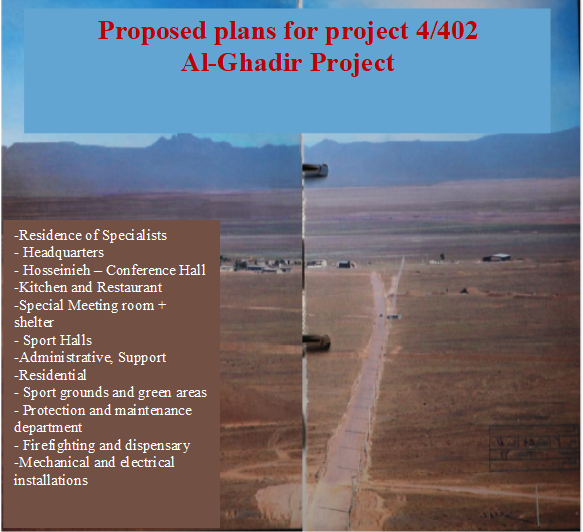
Figure 3. The support area of the Al Ghadir Project, Iran’s secret enrichment facility to make weapon-grade uranium for nuclear weapons under the Amad Plan. It is part of what is now called the Fordow facility. The translated slide from the Nuclear Archive lists several support facilities for the enrichment project. Given the relatively small size of the deeply buried tunnel complex, it would be too small to hold all the necessary ancillary operations of a gas centrifuge plant. Thus, an above ground support area would be expected.
Locating New Facilities at the Fordow Fuel Enrichment Plant
In recent years, using commercial satellite imagery and other open source information, high levels of activity have been observed at the Fordow support area. Additions to the area include the 2016 installation of a Russian S-300 surface-to-air missile system3 and the construction of several building complexes. Two notable, recent construction projects are called by Iran the National Materials Science and Engineering Research Center and the National Vacuum Technology Center, introduced on Iran’s National Nuclear Technology Day in 2018 and 2019, respectively. In promotional videos, Iran describes the new research centers as a “scientific complex for industrial services of the nation.”4 That the facilities serve more than the gas centrifuge program is apparent. However, they also are critical to the gas centrifuge program, and tied to its future and expected increase in capacity.
A recent promotional video distributed by the Atomic Energy Organization of Iran (AEOI) was used in conjunction with commercial satellite imagery to locate the vacuum center at the Fordow support area.5 Figure 4, a Digital Globe image dated March 4, 2019, allows the correlation of the Vacuum Technology Center with footage from the promotional video taken at the facility. As can be seen, this center is near the central traffic circle at the site. Figure 5 shows its recent construction progress.
Using similar methods, including another promotional video, Figure 6 establishes the location of the National Materials Science and Engineering Research Center at the Fordow facility, which was inaugurated in April 2018. Based on the ground footage in this video, we were able to identify the building in overhead imagery.6 According to a scientist interviewed in a media report accompanied by yet another video, this lab is the “first lab in the country being able to conduct tests on samples that are contaminated with radioactive radiation.”7 Further, the report listed ten different labs hosted in the research center: Sample Preparations, Metallography, Morphology Lab, Chemical Analysis, Mechanical Properties, Corrosion and Surface Engineering, Welding and Welding/Boiling Tests, Heat Treatment and Casting, Composite and Polymer Lab, and Ceramic Lab.
Another building complex, the largest in the whole support area, was constructed from 2016 to 2018 (Figure 4). Satellite images taken during construction reveal a basement and what appears to be earthquake-resistant foundation padding. Outward similarities with the combined administrative and research and development facility located at the Natanz facility suggest that this complex likely hosts both laboratories and offices for administrative personnel. The building also appeared in ground footage from a funeral and burial ceremony for two unidentified “martyrs,” which took place on Fordow’s premises in 2018 (Figure 7).
Figure 4. Locating the Vacuum Technology Center at the Fordow facility.
Figure 5. Construction timeline of the Vacuum Center, clockwise from upper left.
Figure 6. Locating the National Materials Science and Engineering Research Center, located near the Vacuum Center. Image inset: https://www.youtube.com/watch?v=MO9H6Dmepsw
Figure 7. Photos of a funeral of two “martyrs” taking place at Fordow in 2018 can be correlated to overhead imagery of the new building complex. Image inset: http://shabestan.ir/detail/Photo/758447
National Vacuum Technology Center in more depth
On April 9, 2019, President Hassan Rouhani announced the opening and operation of the first phase of the Vacuum Technology Center, located at what the Iranians call the “Shahid Alimohammadi Enrichment Plant, Fordow.”8 Iran has used the name Shahid Masoud Alimohammadi to refer to the Fordow Fuel Enrichment Facility after Masoud Alimohammadi, a nuclear scientist with that name who was assassinated by a motorcycle bomb in 2010.9 Alimohammadi is named in documents in the Nuclear Archive as a key member of Iran’s former nuclear weapons program.10 He was a member of the coordinating or planning staff of Project 3, another codename for Project 110, which was charged in the early 2000s with building five nuclear weapons and preparing an underground nuclear test site.11 Figure 8 is a freeze-frame of an Iranian video showing the main entrance of the Vacuum Technology Center. According to Qom’s Governor Barham Sarmast, this center, constructed on 1,500 square meters of land in Qom, has an “important role in nuclear processes.”12
The promotional video clip for the vacuum center features ground footage of the construction process and of the finished inside and outside of the building, as well as a statement by Ali Akbar Salehi, head of the Atomic Energy Organization of Iran. The voice-over narration explains the central purpose of the center to the AEOI and the vast applications of vacuum technology in the nuclear industry, and of a desire “to gather all the activities related to manufacturing, testing and calibration of vacuum equipment across Iran’s atomic energy organization and to provide cross-organizational services and to create a domestic production line of capacitance pressure gauges.”13
According to the narrator, conducted research would also apply to the packaging and aerospace industry, among others. Dr. Salehi adds that the technology center is strategically located near the Materials Science and Engineering Research Center to facilitate collaboration.
The most important equipment mentioned, capacitance pressure gauges for a gas centrifuge program, are often referred to as pressure transducers. Iran has sought them internationally and illegally by the thousands. Pressure transducers are difficult to manufacture, but are critical devices used to measure the pressure in the vacuum systems of gas centrifuge plants. Video footage from inside the center appears to show work on pressure transducers. Figures 9 and 10 are freeze frames of the video, in which persons appear to be making pressure transducers. Figure 11, another freeze frame, appears to show a series of foreign-obtained pressure transducers connected to piping.
The National Vacuum Technology Center appears to have been built to reduce Iran’s dependence on importing pressure transducers and other vacuum equipment needed for the uninterrupted operation and anticipated expansion of its gas centrifuge plants. Pressure transducers and other key vacuum equipment needed in a gas centrifuge plant are difficult to produce reliably, forcing countries with secret or sanctioned gas centrifuge plants, such as Iran, Pakistan, and North Korea, to procure them from abroad illicitly, often at great risk of prosecution by supplier countries such as the United States. Iran has needed to illicitly import thousands, if not tens of thousands of them, in order to operate its Fordow and Natanz enrichment plants. Many were made in the United States and subject to strategic trade controls as well as Iran sanctions.
However, several actions, including improved sanctions, reformed internal corporate controls, and successful U.S. government prosecutions, such as of Chinese nationals involved in Iran’s illicit commodity trafficking schemes, complicated Iran’s overseas purchase of pressure transducers. These controls have even served as a form of a brake on Iran’s enrichment program as it encountered difficulties in obtaining enough pressure transducers. The resulting scrutiny of Iran’s procurements also served as a telescope into the status and scope of Iran’s centrifuge program, much of which has been secret.
Given that these transducers break frequently, and a steady supply is critical to the operation of gas centrifuge plants, it is unsurprising that Iran has sought to establish indigenous production capacities. It pursued a similar strategy with respect to vacuum valves needed for its gas centrifuge program. However, despite its efforts to establish domestic transducer production, like in the case of vacuum valves, Iran will likely need to continue importing critical subcomponents of pressure transducers. Although the Iranian pressure transducer design is not known precisely, at least one of its subcomponents is likely controlled on suppliers’ nuclear dual-use lists and would require a license for export to Iran. They would also be subject to the rules of the procurement channel of the JCPOA.
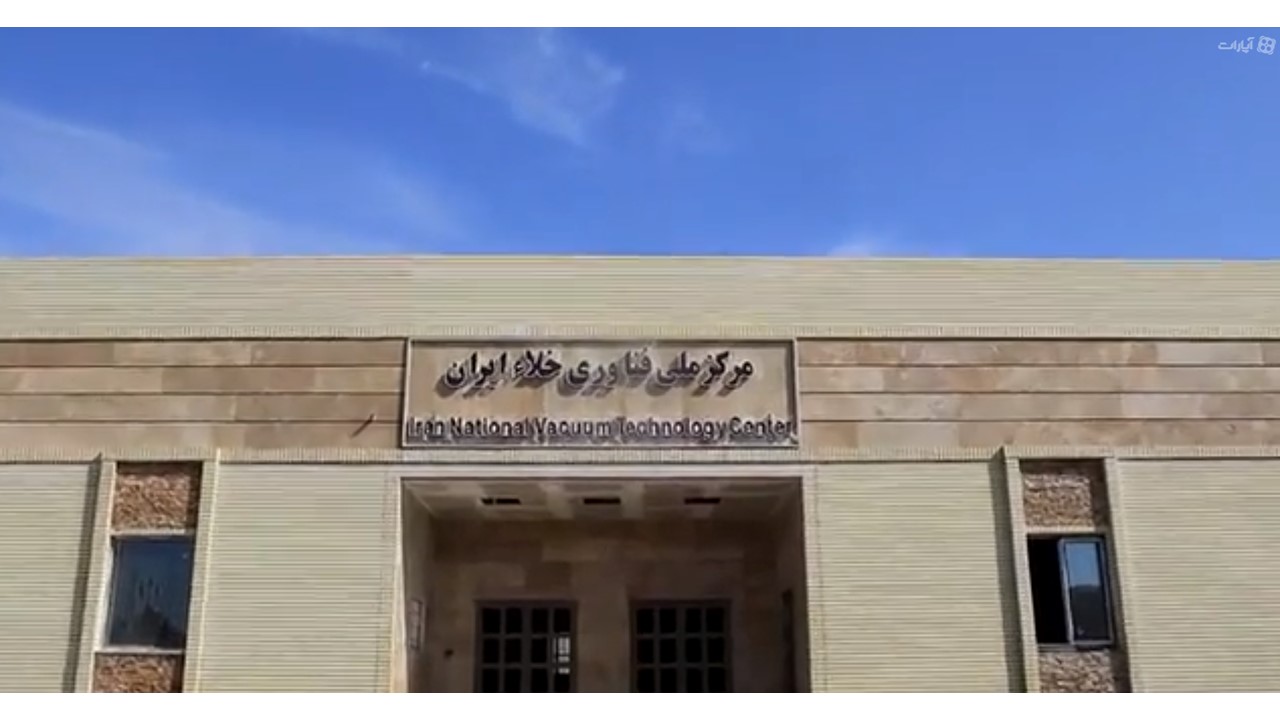
Figure 8. Main entrance of the National Vacuum Technology Center as shown in a promotional video: https://www.aparat.com/v/N6Kc9
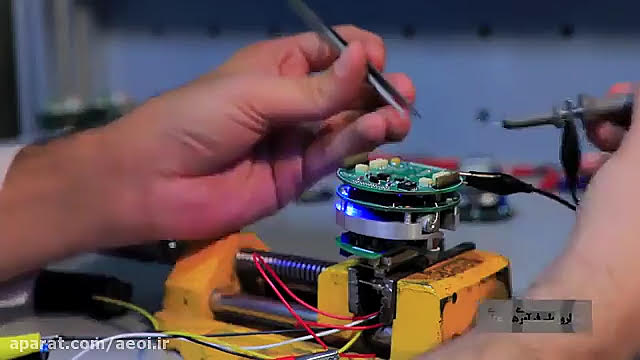
Figure 9. A freeze-frame from a promotional video published by the AEOI that appears to show a worker constructing a pressure transducer.
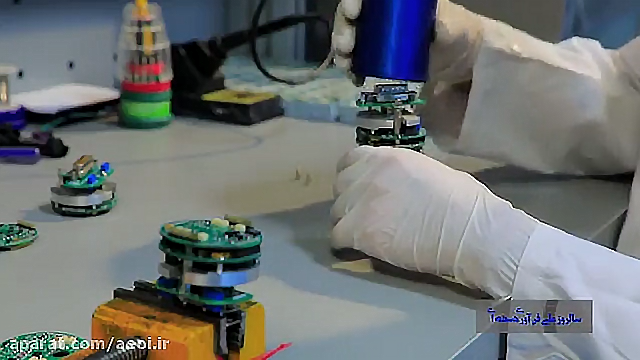
Figure 10. A worker enclosing a completed pressure transducer.

Figure 11. Another freeze-frame from the same AEOI video, showing what appear to be two pressure transducers connected to a thin pipe. The pressure transducers may have been obtained from abroad and not made in Iran.
An Upended Conversion Provision
The presentation of the national vacuum and materials centers during Iran’s National Nuclear Day celebrations is highly unlikely to fulfill what was envisioned as international collaboration for the Fordow facility under the JCPOA. More importantly, these new facilities at the Fordow support complex run counter to expectations that the Fordow facility would be converted into a nuclear, physics and technology center. A careful reading of the JCPOA uncovers ambiguities that seem to permit this. It is our view that Iran is exploiting this ambiguity to further develop its abilities to make critical equipment needed to operate and expand its gas centrifuge program at Fordow and elsewhere, potentially in defiance of international restrictions and strategic trade controls, while maintaining the Fordow underground enrichment tunnel complex in a state of readiness, which could enable the rapid resumption of enriched uranium production at the underground complex.
The focus of the JCPOA appears to be on the underground tunnel complex at Fordow, but the above-ground support area should not be excluded. Moreover, the language on the conversion of Fordow does not define what exactly is the “Fordow facility” or the “Fordow Fuel Enrichment Plant.” For example, according to Paragraph 6 in Section A of the JCPOA, Enrichment, Enrichment R&D, stockpiles:
Iran will convert the Fordow facility into a nuclear, physics and technology centre. International collaboration including in the form of scientific joint partnerships will be established in agreed areas of research.
The subsequent text in the JCPOA discusses the portion of the facility, namely a long hall designed to hold the vast bulk of the facility’s centrifuge cascades (see Figure 1).14 The JCPOA states that one wing of the underground complex could retain six cascades of gas centrifuges.15 It is in this wing that the stable isotope separation project between Iran and Russia would have been established. In the other wing, which is in the same long tunnel hall (see again Figure 1), the article stipulates the removal of “all excess centrifuges and uranium enrichment related infrastructure.” The structure of the paragraph leads to the perception that this newly cleared space would also be part of the envisioned, converted center. However, the language of the JCPOA does not specifically list this space as subject to conversion or in fact include other areas of the Fordow facility as subject to conversion. Overall, beyond the stable isotope separation project, the language on Fordow’s conversion appears imprecise as to what other parts, if any, of the Fordow facility were agreed by all parties to be subject to conversion into this new center.
Further, under Paragraph 7 in Section C, Research and Development (R&D) Practices, Annex I, the JCPOA lays out more concrete plans for international collaboration at the new center. Notably, the realization of the international projects was supposed to occur “within a few years:”
To implement other aspects of this JCPOA and in support of a broader opening of scientific engagements between the E3/EU+3 and Iran, the E3/EU+3 and Iran will seek cooperation and scientific exchange in the field of nuclear science and technology: Accelerator-based nuclear physics and nuclear astrophysics research, and stable isotope production in international collaboration at the nuclear, physics, and technology centre at the Fordow facility. Iran will request from the E3/EU+3 and other interested parties specific proposals for cooperative international nuclear, physics, and technology projects and will host an international workshop to review these proposals. The goal is to realise international collaborative projects within a few years. The transitioning to stable isotope production of two cascades will be conducted in a joint partnership between the Russian Federation and Iran on the basis of arrangements to be mutually agreed upon.
There have been multiple proposals for Fordow’s conversion centering on the emptied wing of the underground facility, including a linear particle accelerator, a neutrino observatory, and a cosmic ray study facility.16 However, nothing suggests that these projects ever moved beyond discussions. Iran reportedly floated the idea of a “multipurpose” lab with instrumentation for unspecified types of nuclear analyses,17 but the other JCPOA parties were reportedly unimpressed. “We want something at Fordow that would promote international scientific cooperation, which increases transparency and openness,” explained one European official to Science magazine in 2017.18 The official added that they wanted to ensure that the facility would not allow Iran to develop techniques useful for evading inspections or sanctions. That goal appears to have failed based on what Iran is building at the Fordow support area.
Although one would have expected the swift conversion of the Fordow facility to have been a priority, that has not been the case. It is unsurprising that Iran has both delayed the full conversion of the tunnel complex and focused instead on other projects at the Fordow facility such as the new centers discussed above. Moreover, already in 2017, before President Trump ended U.S. participation in the JCPOA, AEOI head Salehi indirectly confirmed to Science an Iranian unwillingness to convert the Fordow facility, stating that the project was not a priority in light of anticipated costs and being “so busy with keeping the integrity of the JCPOA in the first place.”19 Salehi’s latter comment serves as an excuse for blocking meaningful conversion while bolstering centrifuge-related research and production capabilities at the Fordow support area.
Moreover, Iran has continued to threaten the international community with the prospect of renewed and increased enrichment activity at Fordow. On June 13, 2018, AEOI spokesman Behrouz Kamalvandi threatened to resume enrichment activities at Fordow if the JCPOA collapses, stating that “when [Khamenei] gives the order we will announce the programs for operating outside of the nuclear deal for reviving Fordow.”20 Six months later, at a visit to Fordow, AEOI head Salehi was quoted as saying “’We currently have 1,044 centrifuges in Fordo, and if the establishment wants, we will restart 20-percent uranium enrichment in Fordo.’”21 These statements underscore that Fordow has always remained a facility that could be reconstituted to its previous purpose, including potentially to that of producing weapon-grade uranium.
Conclusion
Despite the good intentions of the JCPOA, there is little reason to believe that Iran ever intended any meaningful conversion of the Fordow tunnel complex into a technical and scientific international center of cooperation, let alone the closely associated support area. This deeply buried gas centrifuge tunnel complex is too important to Iran, since it can be reconstituted if the deal fails. It can also be reverted, in a worst case, to its original purpose of making weapon-grade uranium for nuclear weapons. With a complex specifically built so that it would be extremely difficult to destroy by military action, the international community could face few options if Iran does choose to move to much higher enrichment at Fordow. Allowing the development of stable isotope separation centrifuges in the Fordow tunnel complex has involved only about a dozen first generation IR-1 centrifuges so far, and will involve no more than two IR-1 cascades, in an underground area originally conceived to hold 18 cascades.22 This work has hardly interfered with maintaining the facility for possible reconstitution to its original purpose.
Moreover, the ambiguity of the JCPOA allowed Iran to further develop its abilities to make critical gas centrifuge-related equipment at the more broadly defined Fordow facility, potentially in defiance of international restrictions and strategic trade controls. These actions appear to be aimed at easing the operation and expansion of its centrifuge program at Fordow and elsewhere.
Since this facility was once part of an active nuclear weapons program and was a facility that Iran took special precautions to hide, its fate under any improved nuclear deal is critical. It should be decommissioned and eliminated in any future deal. That the tunnel complex continues to function in a standby mode reduces the value of the JCPOA.
Despite its efforts to establish domestic pressure transducer production at the vacuum center, Iran will likely need to continue importing critical subcomponents of pressure transducers and other vacuum equipment. Suppliers need to be on guard against Iran violating the JCPOA’s procurement channel provisions and sanctions and strategic trade controls in its efforts to obtain these subcomponents from abroad. Commodity control lists of governments and watch lists of both governments and suppliers should be updated and modified accordingly. In addition, the JCPOA Joint Commission via the UN Secretariat should investigate whether Iran is illicitly procuring equipment for its new semi-indigenous nuclear equipment production line at Fordow. Iran’s illicit procurement for its centrifuge program needs to be strenuously opposed and thwarted.
The Trump administration should no longer grant a waiver for stable isotope separation work at the Fordow facility given Iran’s recent threats to increase enrichment. This waiver legitimizes a facility that should not operate, given its connections to Iran’s former nuclear weapons program. Instead, a priority should be investigating its origins. The United States can reinstate the waiver if the stable isotope production work is moved to the Natanz uranium enrichment facility, where it should have been in the first place.
1. David Albright, Frank Pabian, and Andrea Stricker, “The Fordow Enrichment Plant, aka Al Ghadir - Iran’s Nuclear Archive reveals Fordow was built originally to make weapon- grade uranium for 1-2 nuclear weapons per year,” Institute for Science and International Security, April 25, 2019, http://isis-online.org/isis-reports/detail/summary-of-report-the-fordow-enrichment-plant-aka-al-ghadir-⅛. For a summary of the report, click here.↩
2. For more information, see: David Albright, Frank Pabian, and Andrea Stricker, “The Fordow Enrichment Plant, aka Al Ghadir - Iran’s Nuclear Archive reveals Fordow was built originally to make weapon- grade uranium for 1-2 nuclear weapons per year,” Institute for Science and International Security, April 25, 2019, http://isis-online.org/isis-reports/detail/summary-of-report-the-fordow-enrichment-plant-aka-al-ghadir-⅛. For a summary of the report, click here. ↩
3. “Iran deploys Russian-made S-300 missiles at its Fordow nuclear site – TV,” Reuters, August 29, 2016. https://uk.reuters.com/article/uk-iran-missiles-fordow-idUKKCN1140Z7 ↩
4. “Iran Fordow National Materials Science and Engineering Research Center, New Laboratories,”https://www.youtube.com/watch?v=MO9H6Dmepsw; Iran Atomic Energy Organization, “National Center for Vacuum Technology of Iran,” https://www.aparat.com/v/N6Kc9 Automated Google Chrome translation of the title. Text in the video is in Farsi but was translated by a professional translator who consults with the Institute. ↩
5. Iran Atomic Energy Organization, “National Center for Vacuum Technology of Iran,” https://www.aparat.com/v/N6Kc9. In Farsi but translated by Institute consultant. ↩
6. https://www.youtube.com/watch?v=MO9H6Dmepsw ↩
7. http://www.iribnews.ir/fa/news/2098301/%D8%A7%D9%81%D8%AA%D8%AA%D8%A7%D8%AD-%D9%85%D8%B1%DA%A9%D8%B2-%D8%AA%D8%AD%D9%82%DB%8C%D9%82%D8%A7%D8%AA-%D9%85%D9%87%D9%86%D8%AF%D8%B3%DB%8C-%D9%85%D9%88%D8%A7%D8%AF-%D8%B3%D8%A7%DB%8C%D8%AA-%D9%81%D8%B1%D8%AF%D9%88; https://www.mehrnews.com/news/4267121/%D9%85%D8%B1%DA%A9%D8%B2-%D8%AA%D8%AD%D9%82%DB%8C%D9%82-%D9%88-%D8%AA%D9%88%D8%B3%D8%B9%D9%87-%D8%B9%D9%84%D9%88%D9%85-%D9%85%D9%87%D9%86%D8%AF%D8%B3%DB%8C-%D9%85%D9%88%D8%A7%D8%AF-%D8%B3%D8%A7%DB%8C%D8%AA-%D9%87%D8%B3%D8%AA%D9%87-%D8%A7%DB%8C-%D9%81%D8%B1%D8%AF%D9%88-%D8%A7%D9%81%D8%AA%D8%AA%D8%A7%D8%AD. In Farsi but translated by Institute consultant. ↩
8. http://www.iribnews.ir/fa/news/2396231/%D8%B1%D9%88%D9%86%D9%85%D8%A7%DB%8C%DB%8C-%D8%A7%D8%B2-%DB%B1%DB%B1%DB%B4-%D8%B7%D8%B1%D8%AD-%D9%88-%D8%AF%D8%B3%D8%AA%D8%A7%D9%88%D8%B1%D8%AF-%D9%87%D8%B3%D8%AA%D9%87%E2%80%8C%D8%A7%DB%8C. In Farsi but translated by Institute consultant. ↩
9. Saeed Kamali Dehghan, “Man Pleads Guilty to Assassinating Iranian Nuclear Scientist,” The Guardian, August 23, 2011, https://www.theguardian.com/world/2011/aug/23/iran-nuclear-scientist-assassination-trial ↩
10. See for example, David Albright, Sarah Burkhard, Olli Heinonen, Frank Pabian, and Andrea Stricker, “Project Midan: Developing and Building an Underground Nuclear Test Site in Iran,” Institute for Science and International Security, April 2, 2019, Annex 1, http://isis-online.org/isis-reports/detail/project-midan-developing-and-building-an-underground-nuclear-test-site-in-i/8 ↩
11. Ibid. ↩
12. IRNA, “Iran Launches Vacuum Tech Center on Nuclear Day,” April 9, 2019, https://en.irna.ir/news/83271635/ ↩
13. Video in Farsi; translation by the Institute. ↩
14. See also relevant diagrams and discussion in “The Fordow Enrichment Plant, aka Al Ghadir,” Institute for Science and International Security, April 25, 2019, http://isis-online.org/isis-reports/detail/summary-of-report-the-fordow-enrichment-plant-aka-al-ghadir-⅛ ↩
15. The JCPOA states: “1044 IR-1 centrifuges in six cascades will remain in one wing at Fordow. Two of these cascades will spin without uranium and will be transitioned, including through appropriate infrastructure modification, for stable isotope production. The other four cascades with all associated infrastructure will remain idle. All other centrifuges and enrichment-related infrastructure will be removed and stored under IAEA continuous monitoring as specified in Annex I.” ↩
16. Declan Butler, “Iran Nuclear Deal Raises Hopes for Science,” Scientific American, April 15, 2015, https://www.scientificamerican.com/article/iran-nuclear-deal-raises-hopes-for-science/ Richard Stone, “Exclusive: Iran’s Atomic Czar Explains How He Helped Seal the Iran Nuclear Agreement,” Science, December 9, 2017, https://www.sciencemag.org/news/2015/08/exclusive-iran-s-atomic-czar-explains-how-he-helped-seal-iran-nuclear-agreement ↩
17. Richard Stone, “United States Blocks Iran from Fusion Megaproject,” Science, September 25, 2018, https://www.sciencemag.org/news/2017/10/united-states-blocks-iran-fusion-megaproject ↩
18. Ibid. ↩
19. Ibid. ↩
20. “Iran Says Will Begin Uranium Enrichment at Fordow If Nuclear Deal…,” Reuters, June 13, 2018, https://www.reuters.com/article/us-iran-nuclear-fordow/iran-says-will-begin-uranium-enrichment-at-fordow-if-nuclear-deal-unravels-idUSKBN1J91KN ↩
21. “Iran Warns to Resume 20% Enrichment If N. Deal Fails,” Fars News Agency, December 13, 2018, http://en.farsnews.com/newstext.aspx?nn=13970922000650 ↩
22. “The Fordow Enrichment Plant, aka Al Ghadir,” Institute for Science and International Security, April 25, 2019. ↩

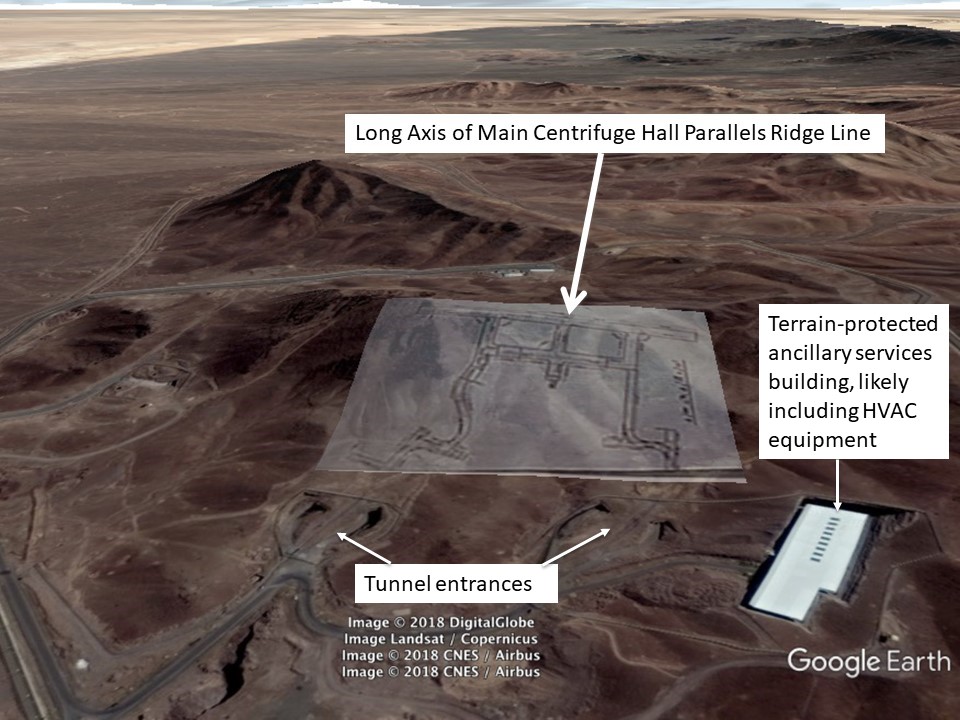
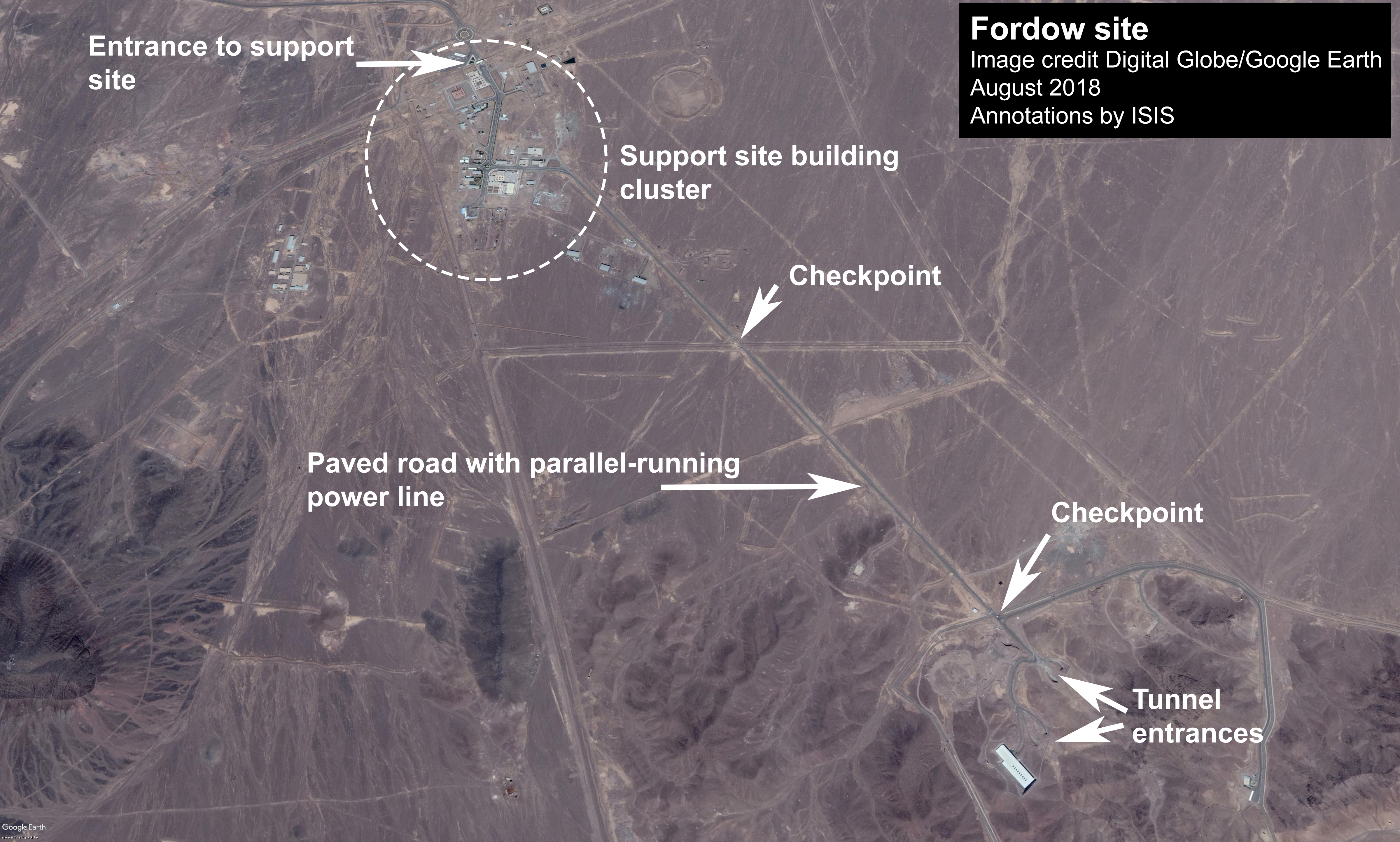


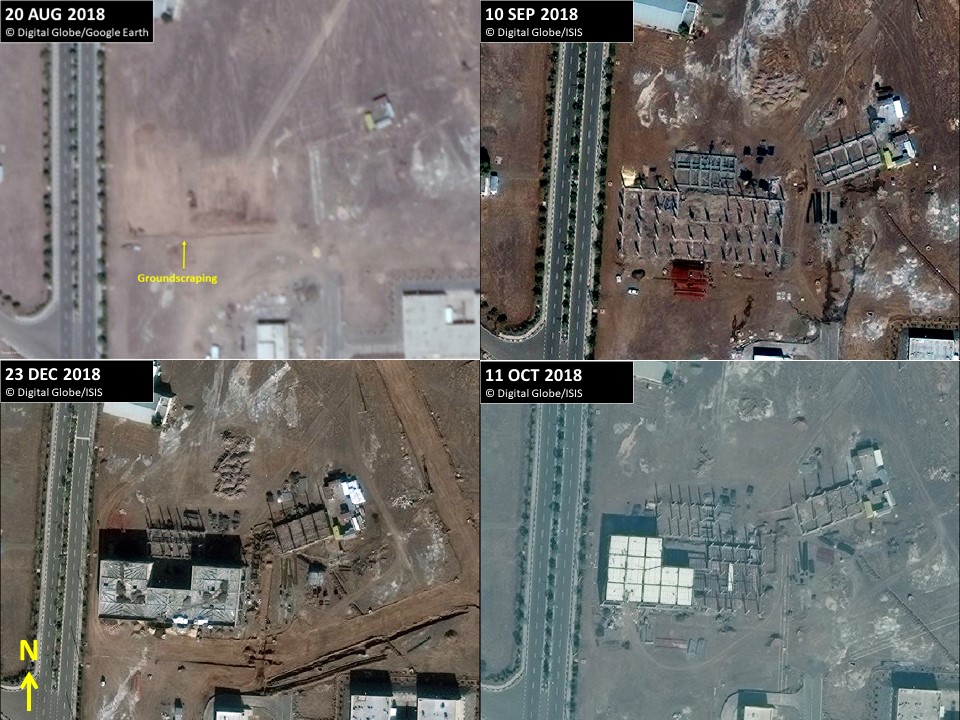
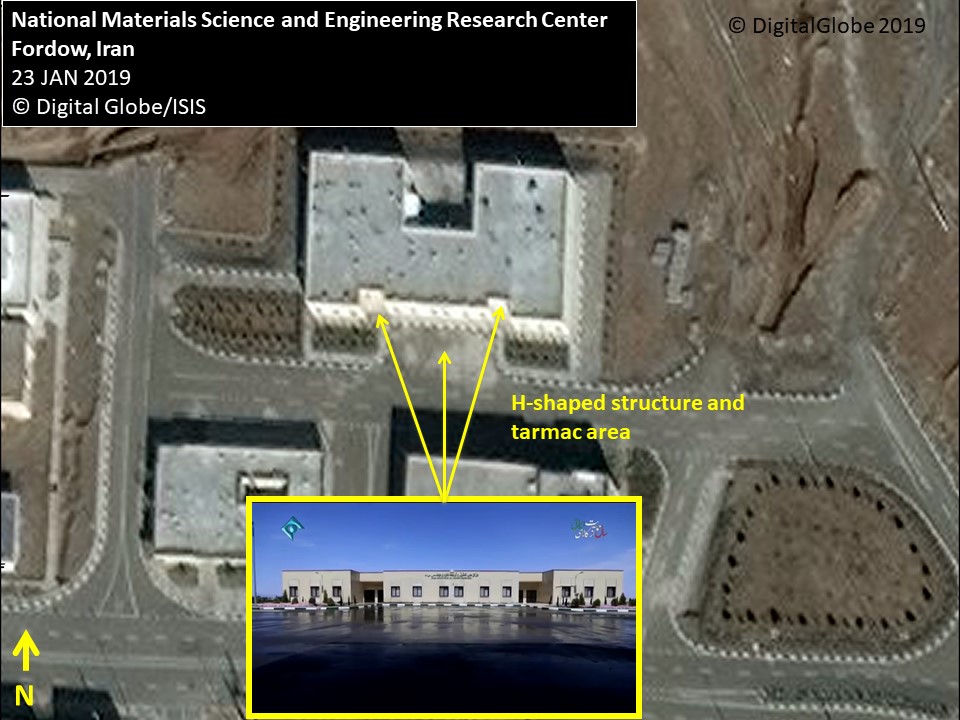
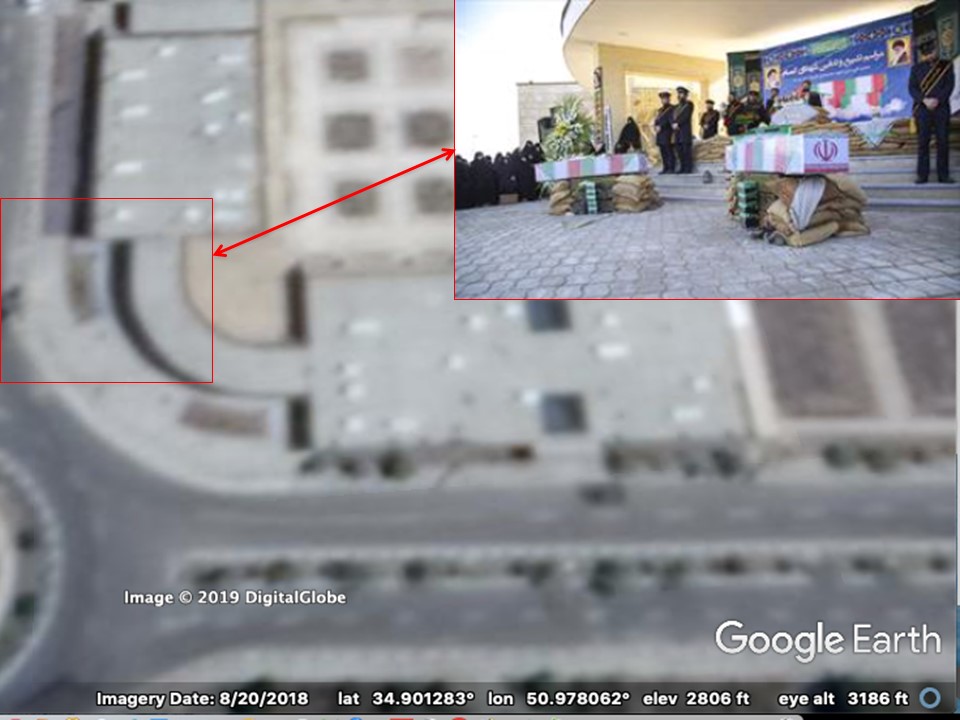
 twitter
twitter